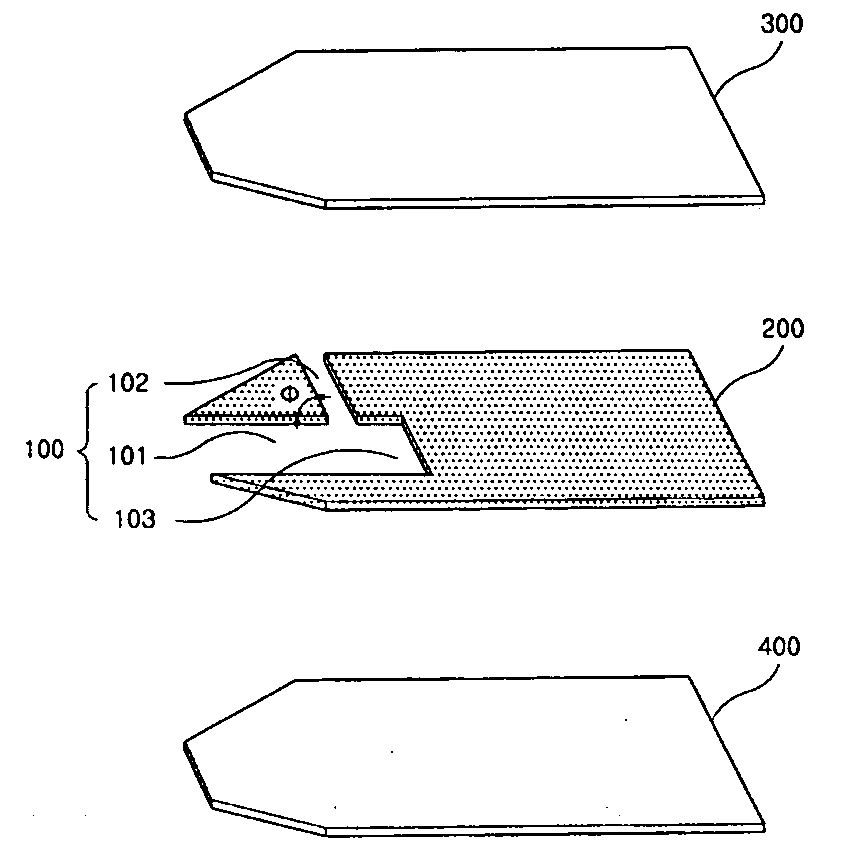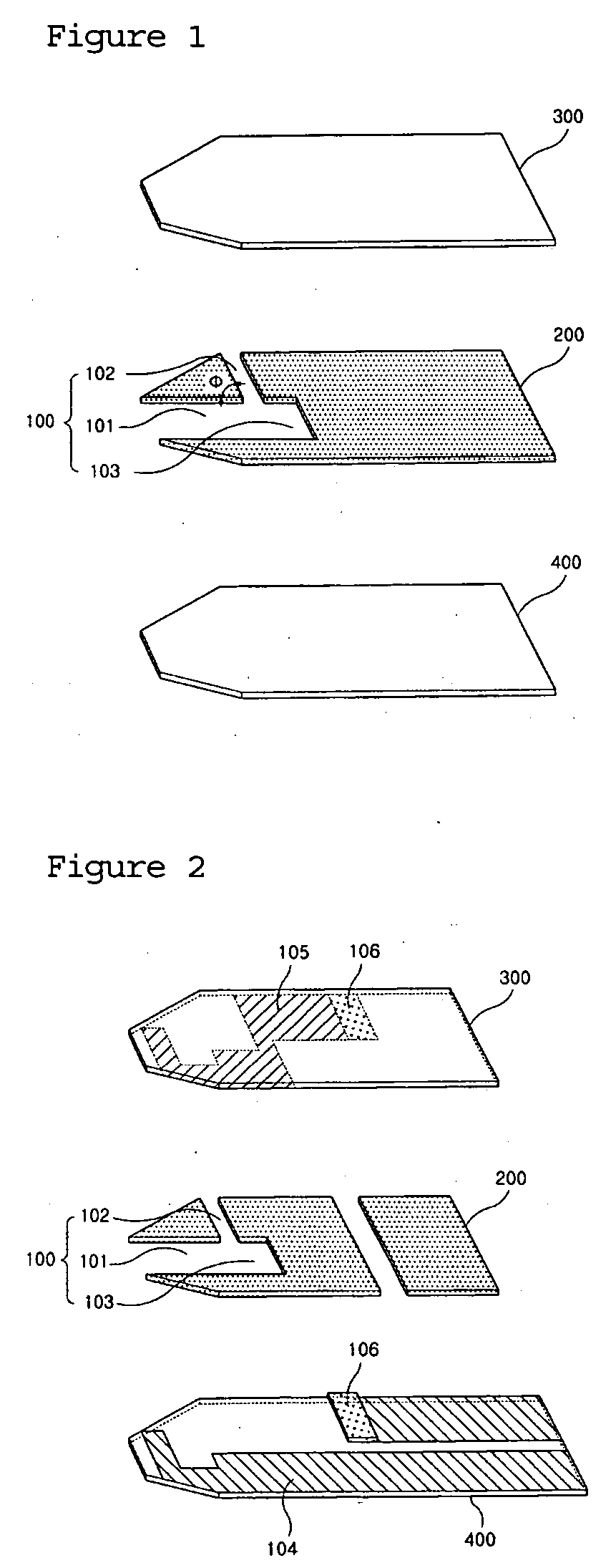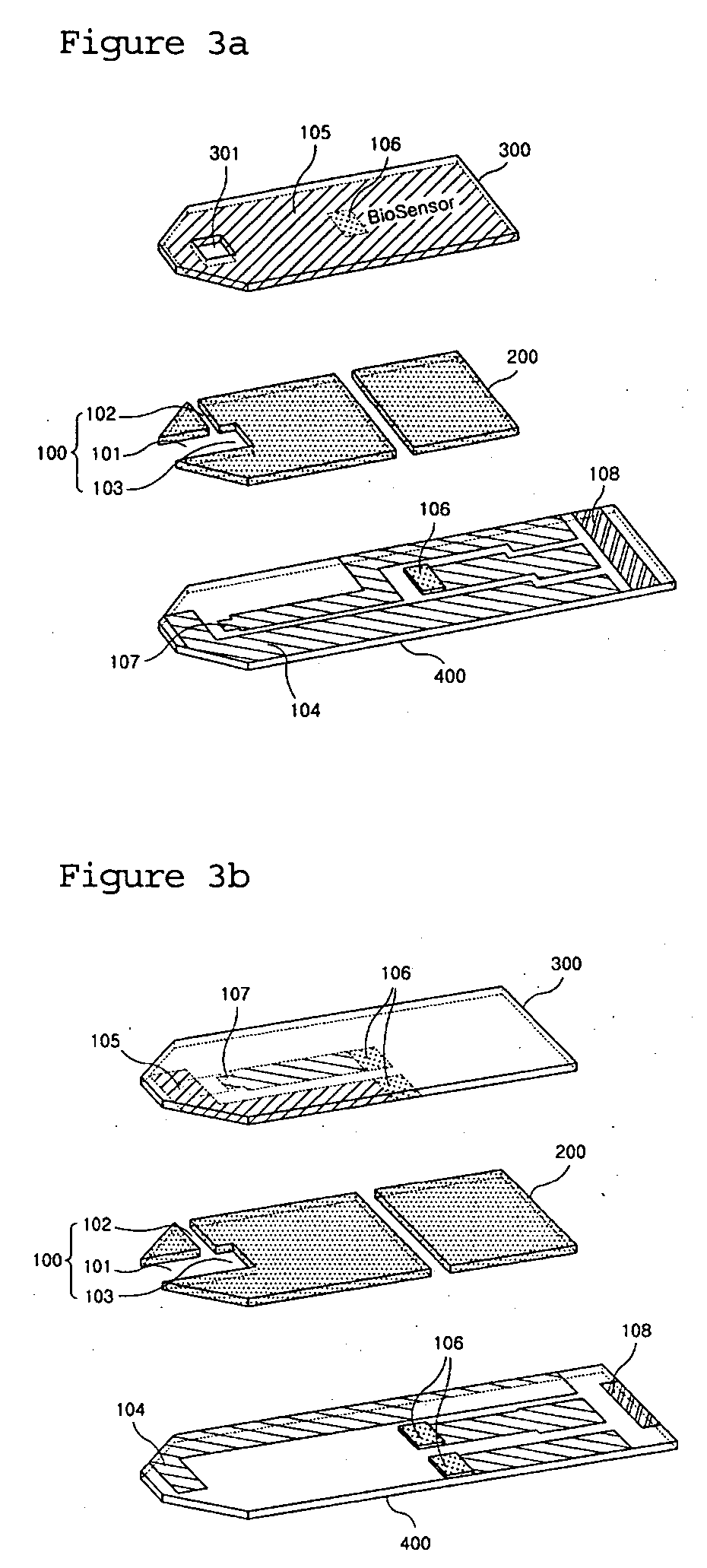Electrochemical biosensor
a biosensor and electrochemical technology, applied in the direction of liquid/fluent solid measurement, material electrochemical variables, instruments, etc., can solve the problems of blood hematocrits, loss of life, difficulty in dispensing reagent cocktails on working electrodes, etc., to reduce hematocrit level-dependent bias, facilitate electron transfer, and introduce fast and constant
- Summary
- Abstract
- Description
- Claims
- Application Information
AI Technical Summary
Benefits of technology
Problems solved by technology
Method used
Image
Examples
example 1
Preparation of Reagent Layer Composition Solution Without Fatty Acid
[0115] A mixture containing 30 mg of hexaamineruthenium (III) chloride (41.6 wt %), 1 mg of carboxymethylcellulose (1.4 wt %), 1 mg of Triton X-100 (1.4 wt %), and 40 mg of glucose oxidase (55.6 wt %) was dissolved in 1 ml of PBS buffer (pH 6.4), followed by filtering off undissolved particles. The reagent solution thus obtained was placed in the syringe of a pneumatic dispenser (EFD XL100).
example 2
Preparation of Reagent Layer Composition Solution With Fatty Acid
[0116] A mixture containing 30 mg of hexaamineruthenium (III) chloride (32.6 wt %), 1 mg of carboxymethylcellulose (0.8 wt %), 5 mg of polyvinyl pyrrolidone (4 wt %), 1 mg of Triton X-100 (0.8 wt %), 20 mg of lauric acid (15.7 wt %), 30 mg of myristyltrimethylammonium bromide (23.6 wt %), and 40 mg of glucose oxidase (31.5 wt %) was dissolved in 1 ml of PBS buffer (pH 6.4), followed by filtering off undissolved particles. The reagent solution thus obtained was placed in the syringe of a pneumatic dispenser (EFD XL100).
example 3
[0117] In this example, a method of measuring blood glucose levels is described. The auxiliary electrode 105 shown in FIGS. 2 and 3b was used as a reference electrode in the thin-layer electrochemical cell-type biosensor. A thin-layer electrochemical cell for the measurement of blood glucose levels was fabricated as follows.
[0118] As shown in FIGS. 2, 3a and 3b, a working electrode 104, and an electrode connector 106, which is thick enough to three-dimensionally connect with an auxiliary electrode, were screen-printed with conductive carbon paste, and then cured at 140° C. for five minutes. Next, a circuit connector was screen-printed with a silver paste on one end of the electrode connector 106 to the thickness of the middle substrate 200. Likewise, a reference (auxiliary) electrode 105 was screen-printed with carbon paste on the upper substrate 300 and cured in the same condition as in the electrode of the lower substrate 400. Finally, a silver paste was screen-printed at the end...
PUM
 Login to View More
Login to View More Abstract
Description
Claims
Application Information
 Login to View More
Login to View More - R&D
- Intellectual Property
- Life Sciences
- Materials
- Tech Scout
- Unparalleled Data Quality
- Higher Quality Content
- 60% Fewer Hallucinations
Browse by: Latest US Patents, China's latest patents, Technical Efficacy Thesaurus, Application Domain, Technology Topic, Popular Technical Reports.
© 2025 PatSnap. All rights reserved.Legal|Privacy policy|Modern Slavery Act Transparency Statement|Sitemap|About US| Contact US: help@patsnap.com



